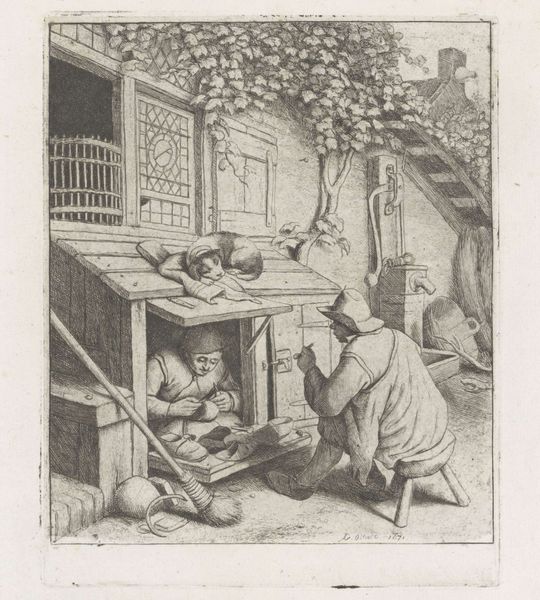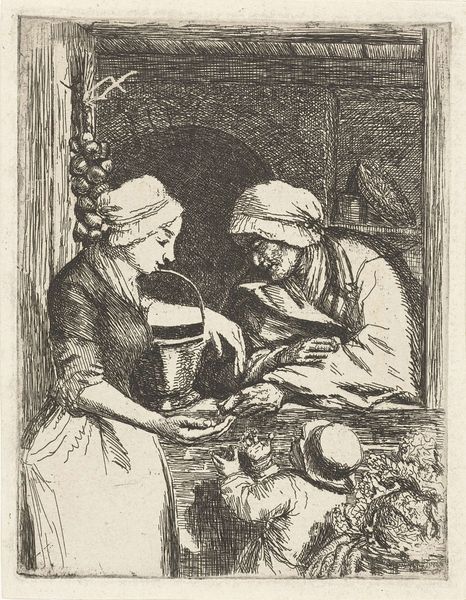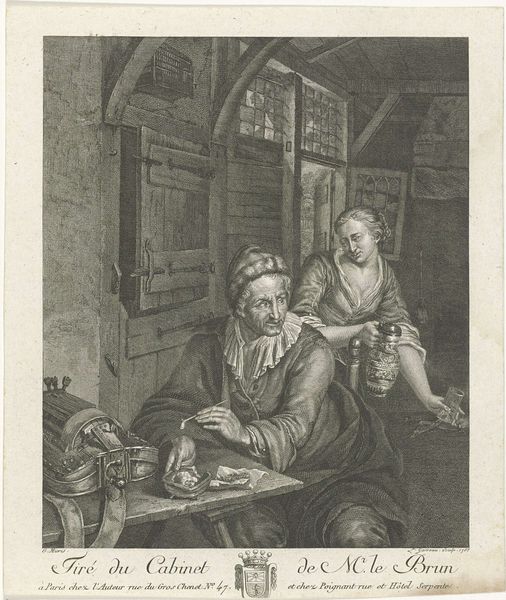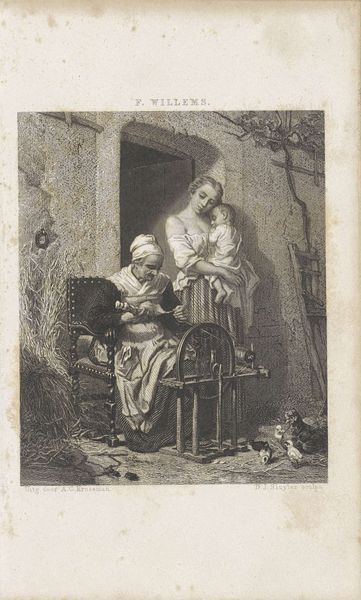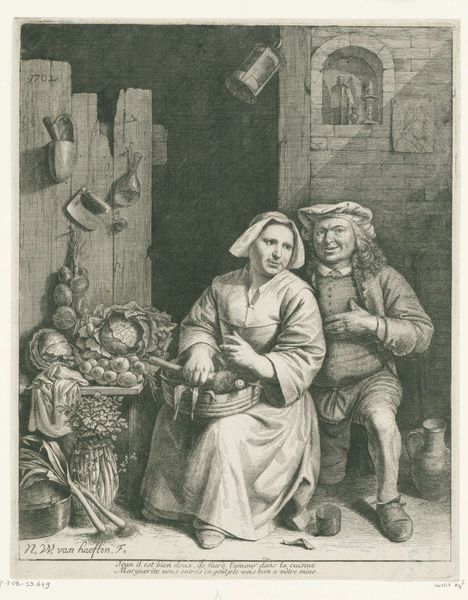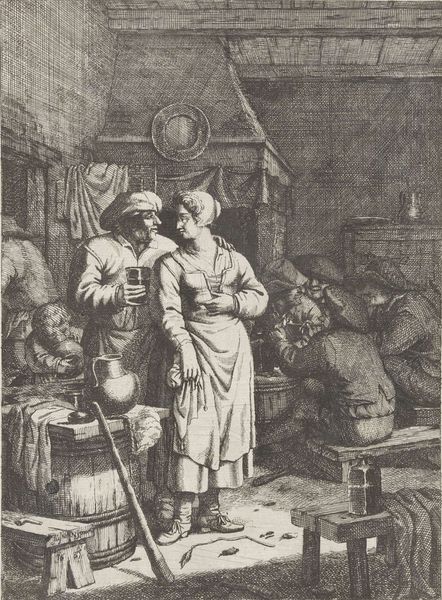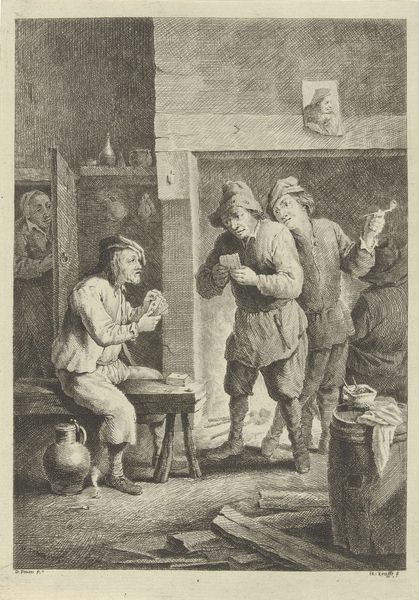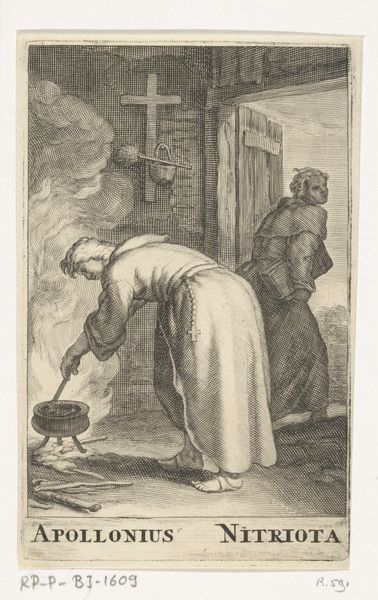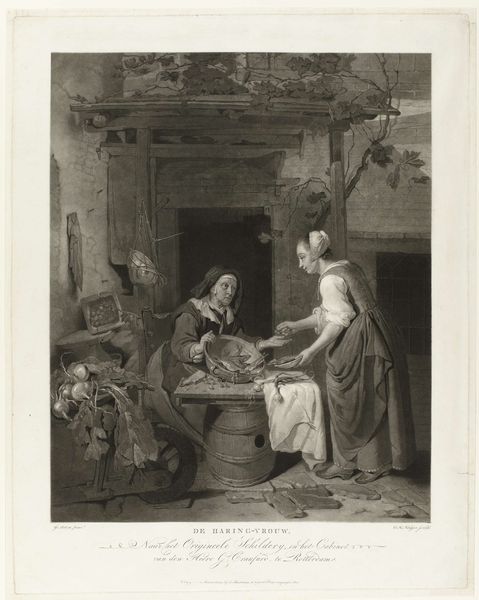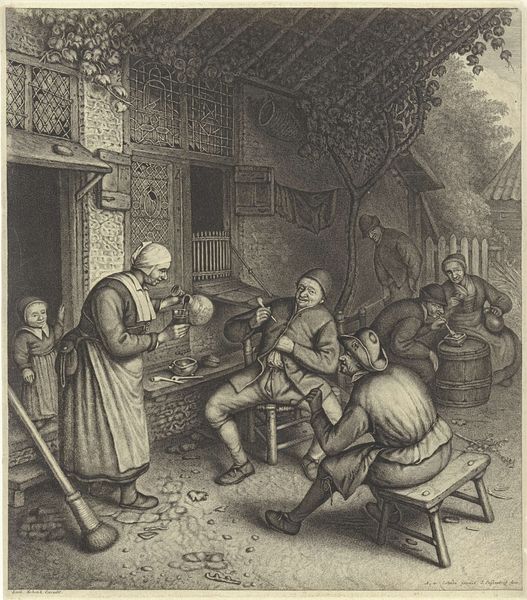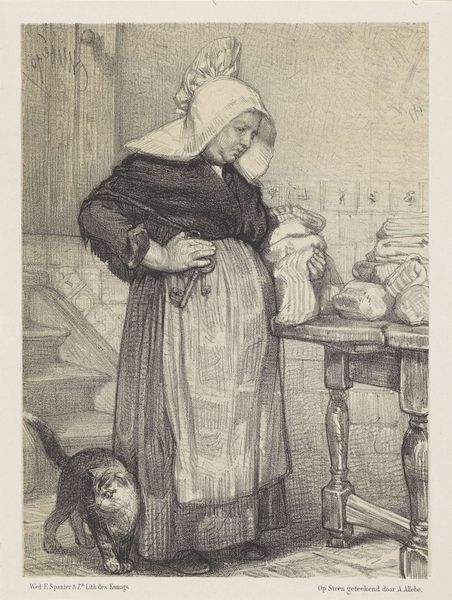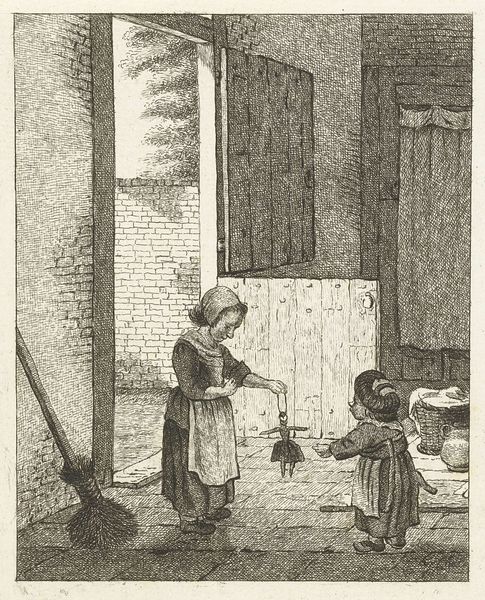
Dimensions: height 375 mm, width 294 mm
Copyright: Rijks Museum: Open Domain
Curator: Here we have "De pottenverkoper", or "The Pottery Seller," an engraving by Giovanni Volpato, created sometime between 1743 and 1803. It is currently held in the collection of the Rijksmuseum. Editor: Immediately, I’m drawn to the almost theatrical contrast of light and shadow. It's such a stark depiction of daily life; there's a narrative here, but one tinged with the grit of survival. Curator: Absolutely, Volpato uses this common genre scene to engage in larger social dialogues. Note the woman in the doorway, her clothes are far less tattered than the man with the pots, can we infer that Volpato might be speaking on the socio-economic disparity of Venetian tradespeople? Editor: It's certainly compelling to view it through that lens, recognizing the visual cues as social commentary. How does the institutional framework – the Rijksmuseum, in this case – affect how we perceive a piece like this, originally intended as a widely distributed print? Curator: The shift in context is profound. Once readily available, easily consumed by a diverse public, it now resides within the rarefied halls of a national museum. This transformation elevates the artwork, but also inevitably changes its social function. Editor: Right. What narratives are prioritized by that elevation, and whose stories are silenced or ignored? Is this 'genre' painting simply picturesque, or does it indict the social structures that produce poverty? Looking at her face, there are only hard lines, a life not lived for enjoyment. Curator: Exactly. And beyond the immediate figures, what does the backdrop convey? The visible buildings and structures speak to a certain type of infrastructure, potentially underscoring who has access to stability, and what are the foundations upon which wealth is created, highlighting this silent transaction taking place, in what is otherwise a very populated place? Editor: So, in analyzing Volpato's work, we aren't simply appreciating its formal qualities but engaging with a complex tapestry of history, gender, and power, reminding us that art never exists in a vacuum. Curator: Precisely. The piece calls on the viewers to think critically about class and gender constructs. The visual is a snapshot into socio-economic inequality in eighteenth-century Italy, framed within a power-laden transaction of consumerism. Editor: Indeed, viewing “The Pottery Seller,” prompts us to examine not only the artist's skill but also the narratives embedded in everyday life. A sobering reminder that art reflects and shapes societal consciousness.
Comments
No comments
Be the first to comment and join the conversation on the ultimate creative platform.

